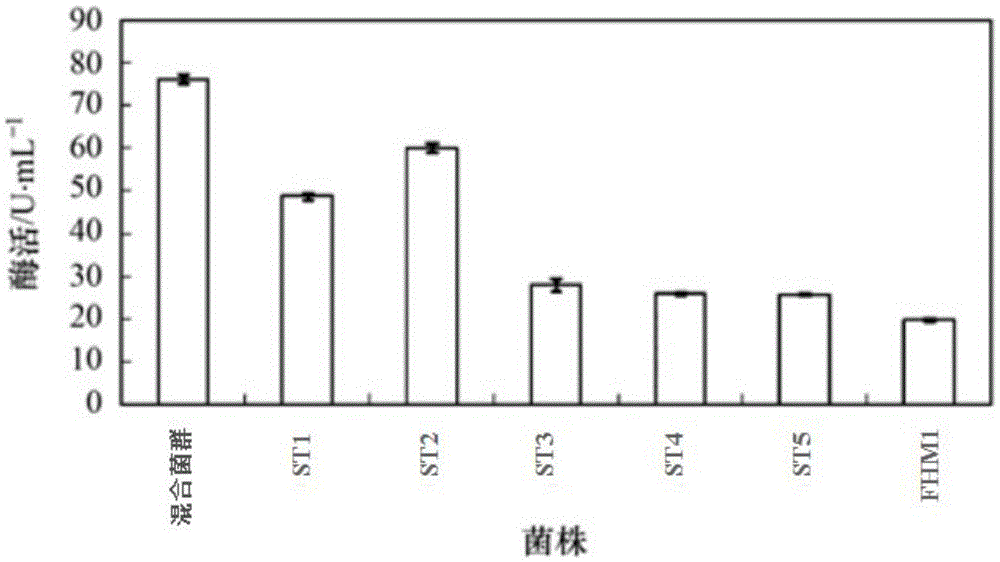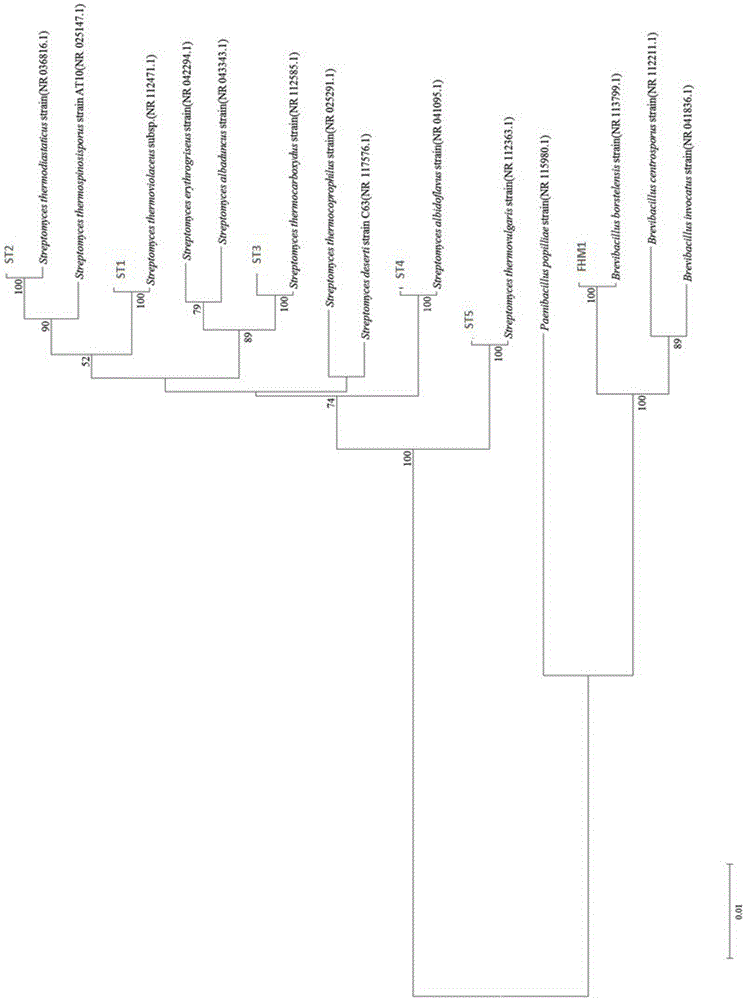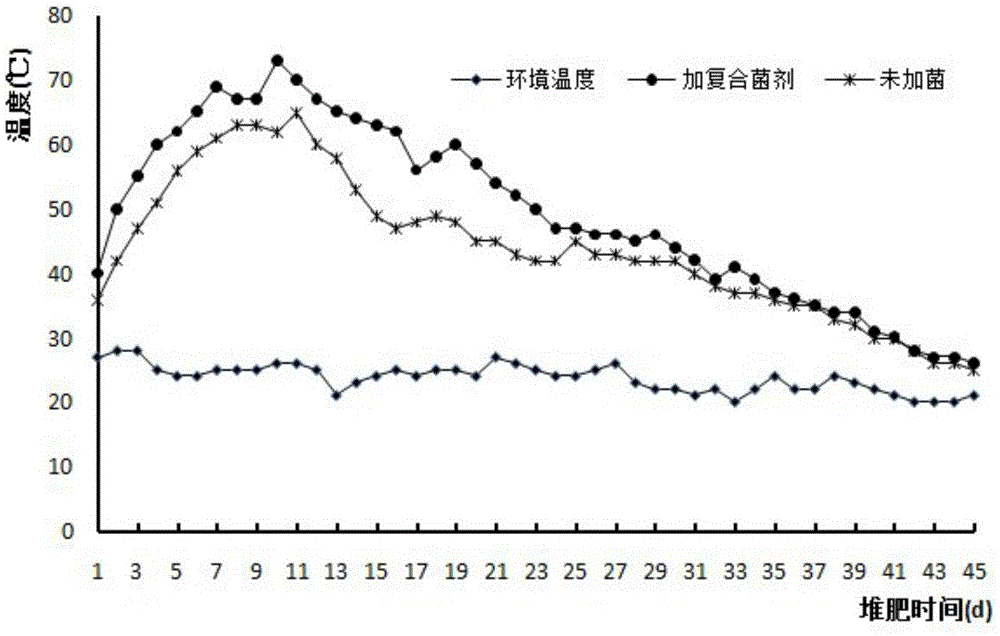Preparation and application of garden waste compound degrading microbial agent
A compound bacterial agent and cellulose-degrading technology, applied in the field of environmental biology, can solve the problems of difficult cellulose degradation and long composting cycle, and achieve the effects of accelerating the composting process, reducing processing costs, and improving time
- Summary
- Abstract
- Description
- Claims
- Application Information
AI Technical Summary
Problems solved by technology
Method used
Image
Examples
Embodiment 1
[0023] Example 1 Screening and identification of high-temperature cellulose-degrading bacteria
[0024] Samples were collected from composting of garden waste in an apple orchard in Changping District, Beijing at the early stage of high temperature, middle stage of high temperature, and late stage of high temperature material, and the accumulation of landscaping waste in the afforestation area of Yanqing Plain in Beijing; 10 g of the above fresh samples were weighed and placed in a container containing 10 glass beads. , and filled with 90ml of sterile water in a conical flask, placed in a shaker at 30°C and 150rpm for 30min to fully disperse the samples, and left to enrich and cultivate at 50°C for 24h. Use a sterile pipette to draw 1ml of the supernatant and add it to a test tube containing 9ml of sterile water, which is 10 -1 Sample diluent, again from 10 -1 Take 1ml of the sample and add it to 9ml sterile water, which is 10 -2 sample diluent, and so on, to get 10 -3 、1...
Embodiment 2
[0027] Antagonism research between the strains of embodiment 2
[0028] The above-mentioned six cellulose-degrading bacterial strains were streaked two by two on the carboxymethyl cellulose medium but not intersecting each other, cultured at 50°C for 3 days. If a sterile zone is formed at the intersection of two bacteria, it means that a zone of inhibition has formed between the two bacteria, and the two bacteria are antagonistic to each other and cannot be combined together. combination. From the results, there is no antagonistic effect between the various strains, and they will not interfere with each other and affect the growth of the strains, so it can be made into a compound bacterial agent.
Embodiment 3
[0029] Embodiment 3 mixed flora produces cellulase ability
[0030] The 6 strains of high-temperature and high-efficiency cellulose-degrading bacteria screened were inoculated in CMC-Na liquid medium, and cultured in a constant temperature shaker at 50°C with a rotation speed of 150rpm / min. Streptomyces, Streptomyces vulgaris and Brevibacillus Potsdam were cultured for 12 hours, Streptomyces carbomonoxide and Streptomyces albiflous were cultured for 72 hours, and the turbidity OD600 of each culture solution was adjusted to 0.2, and then the suspensions of these 6 strains were prepared according to the The ratio of volume to volume is evenly mixed to obtain a mixed bacterial liquid. Use the same inoculation amount of the mixed bacteria liquid and each single strain to carry out fermentation and enzyme production under the same fermentation conditions, and compare the enzyme production ability of the mixed bacteria group and the single strain, see figure 1 . Depend on figure ...
PUM
 Login to View More
Login to View More Abstract
Description
Claims
Application Information
 Login to View More
Login to View More - R&D
- Intellectual Property
- Life Sciences
- Materials
- Tech Scout
- Unparalleled Data Quality
- Higher Quality Content
- 60% Fewer Hallucinations
Browse by: Latest US Patents, China's latest patents, Technical Efficacy Thesaurus, Application Domain, Technology Topic, Popular Technical Reports.
© 2025 PatSnap. All rights reserved.Legal|Privacy policy|Modern Slavery Act Transparency Statement|Sitemap|About US| Contact US: help@patsnap.com



